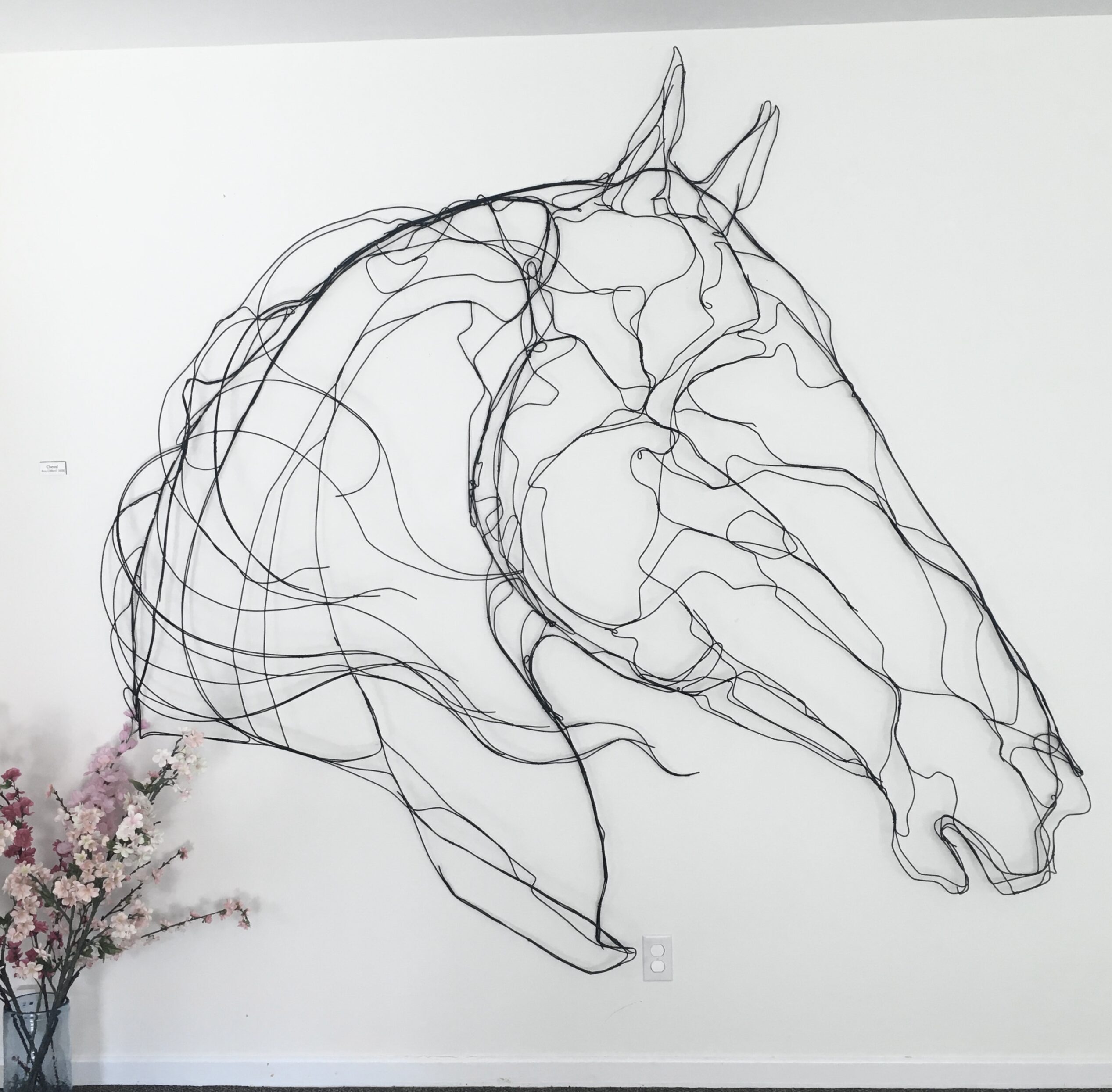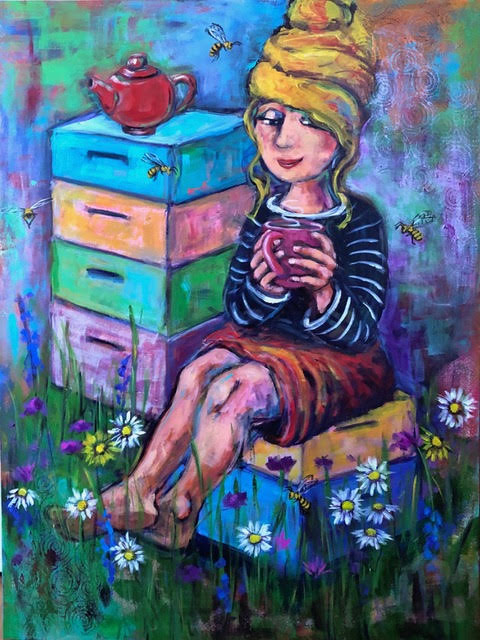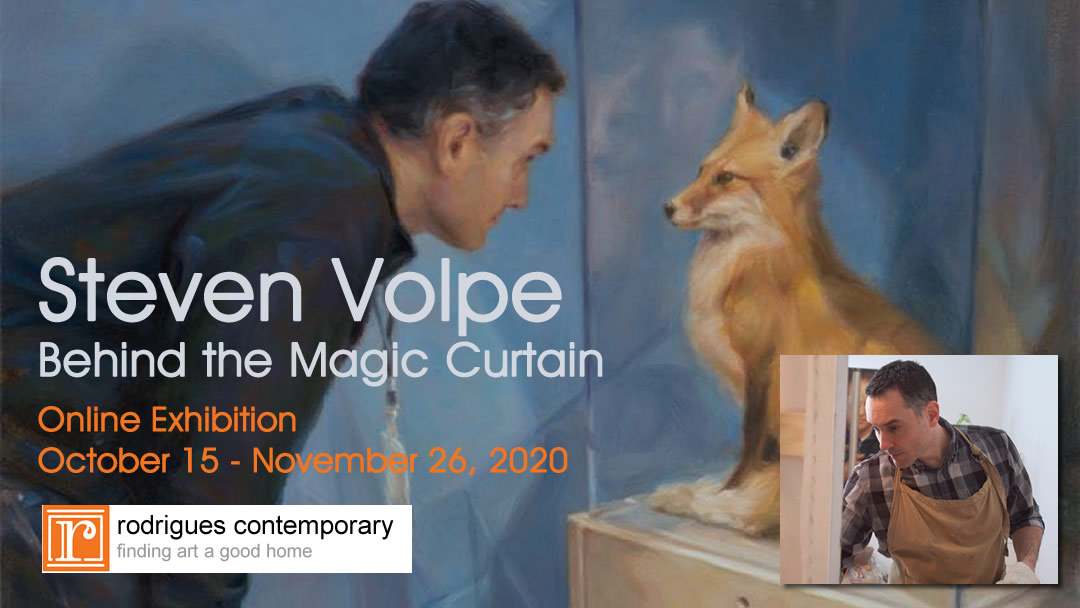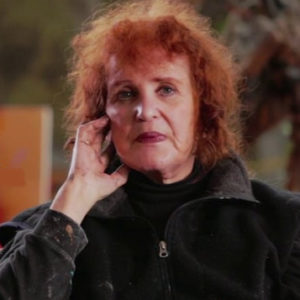Canadian Artist Bob “Omar” Tunnoch Chats About New Work, Life During Pandemic, Music and More
FOR THOSE WHO PREFER TO READ:
TR: So excited to introduce you to a man who’s won multiple awards for his visual art. He is a musician and a two-time Juno award-winning songwriter, founding member of Canadian blues group Fathead. He’s been on stage with some of the music world’s greatest legends including Etta James, Paul Butterfield, John Lee Hooker and Big Mama Thornton, to name a few. He’s a family man, married to Sandra, who is awesome, and has a daughter named Allison who is the apple of his eye. I’ve known Bob “Omar” Tunnoch since 2014 during his exhibition called Moody Hues with four other Juno-award winning musicians, showcasing their visual arts. It’s been amazing to watch his visual art career explode. He is one of the most humble and down-to-earth painters I know. Well, maybe not so much down to earth as outer worldly. However, he is fantastic. Omar, thanks for being here with us today. Hello, hello. How are you doing?
OT: Hey Teresa can you hear me?
TR: I can hear you. I can hear you. I barely see you, but I can hear you.
OT: Okay, my daughter’s helping me here for a second. Hold on.
TR: Hi Allison.
OT: Boy, how come your face is so clear? I look like I’m in the fourth dimension.
TR: Well, if the shoe fits. [Glitch]. Oh, there we go.
OT: Are you there?
TR: So much better. Wow, how are you?
OT: Is that you, Teresa?
TR: That’s me.
OT: Good. How are you?
TR: Not bad, thanks.
OT: My daughter said, “Dad, do you need to wear your glasses?” So, now I don’t know who I’m talking to. I can’t see anything.
TR: You know what? I put mine on, but I can’t see without them. So, I’m looking at a blank screen if I take them off, too.
OT: Okay, well, I’m going to join you, okay?
TR: Okay. Oh, there’s quite the glare now.
OT: Hey, Teresa, how are you doing?
TR: I’m good. How are you? There’s a lot of glare now on your glasses. I can’t see you. You’ve got like aliens in your glasses.
OT: Well, that’s just my friends.
TR: How are you doing? How are you keeping busy?
OT: Good. How are you doing?
TR: Good, good, good.
OT: Strange times.
TR: For sure, but that’s okay. Yeah, we’ll get through it.
OT: Yeah, for sure. Yeah.
TR: Have you been doing a lot of work?
OT: Well, strangely enough, not a heck of a lot. Not to say that I was in a funk; it’s just it was weird trying to get started. I’m just getting started up again. I’ve got a bunch of pieces I’m working on. I have a very strange one I’ll tell you about in a second.
TR: Okay. good stuff. You’re always coming up with these fantastical images. I know they’re real organisms or creatures or whatever you want to call them, but they’re just so out of this world.
OT: Well, thank you. I’m not from this world anyways, so.
TR: I want to ask you about “Omar”? Where did that come, omartian obviously, but how did the name come about?
OT: Right. When I was in high school, I used to wear those big farmer overalls, you know, with the suspenders and they were way too big for me, so people used to call me Omar the Tentmaker and it stuck like glue. I’ve had it ever since.
TR: Really?
OT: When Sandra first met me, she only knew me as Omar, right. So, when we first went to meet my parents, we were there for about five minutes, she goes, “Who’s this Bob guy?” She didn’t know my real name was Bob.
TR: But she still loved you and she married you. How’s Sandra doing?
OT: I hope so. Yeah, good. Everybody’s good up here. Yeah, we’re in isolation. We’re in isolation anyways just where we live, but yeah, we’re just doing our thing, you know. Allison’s up here staying with us, which is great. So, all is good.
TR: Has the isolation affected you? I mean, artists generally are pretty isolated when they work. Has that affected you at all or is it kind of same thing as usual except you can’t go out for different things?
OT: Yeah, like you said, artists always work in isolation anyways. I just found it was hard to get kick-started. I’ve already got pieces on the go. I’ve got two pieces on the go and my strange lamp, but yeah, it’s, no, not really.
TR: No? Okay, so let’s dive right in and tell me what you’re doing. Tell me about your new pieces.
OT: One piece I’m working on, one painting I’m working on now, almost done, is called “Zen Wellness Retreat for Tadpoles”.
TR: Why doesn’t that surprise me?
OT: What it is, is there’s a model a statue, a small statue of a Buddha with incense burning on one side. Then there’s a jar, and in the jar are these two tadpoles in front of it and there’s incense burning off the Buddha. On the other side is a little sign that says, ‘Just Be You’. Tadpoles need wellness retreats, too.
TR: Oh, do they? Are they doing yoga or anything like that? No?
OT: Yeah no, they’re in training.
TR: I love your work.
OT: And then the other one I’m doing, you know I have that series of ‘Life Under the Halogen’, I’m doing one now, it’s called ‘Weedy Seadragon’. It’s a very bizarre type of seahorse. So, I’m doing that.
TR: Life Under the Halogen, that was a pretty interesting series. How did that come about?
OT: I was working house painting, right. I was working at a house. They had halogen lights in the ceiling and they would shine down on the walls, but there was nothing under the ellipse of the light, right. It was just kind of like, oh jeez, it looked like something should have been on display under this ellipse. All of a sudden I say hey, you know what, I’ll put different creatures under these things and do all that kind of stuff. That’s how that evolved like that.
TR: A lot of the creatures that you have are endangered or species at risk, including musicians, which I thought was pretty funny, but not so funny. That was pretty cool. You’ve got a lot of the tree frogs, a lot of toads and frogs. Why frogs? Is there a special bond with frogs that you have?
OT: Well, I’m a real reptile and amphibious enthusiast. Yeah, frogs I just like them. They’re strange things and there are so many different forms of them. I just found a frog called the hairy frog from Cameroon. It has these hairs all on the side of its body. I guess it uses it to collect oxygen. Then I kept reading on. When it’s threatened or something grabs it, it breaks the bones in its arms and the bones stick through like claws and it protects itself like this. I don’t know if the bones grow back. It was a really weird thing I read.
TR: Wow. Do you actually look these things up and say what is the weirdest frog out there? How do you find these things? How do you find these creatures?
OT: I search. I’ve always been reading about them and searching about them. Sometimes I have done that, I said most colorful whatever it is and these things come up with the biggest frog or all that kind of stuff. I just always have been interested. They always fascinated me.
TR: Interesting. We want to know what goes on in there [head], because it’s a little out there, and we love you for it.
OT: When my therapist gets back to me, I’ll let you know what he thinks is going on in my head. Right now, I have him tied up and duct taped in the crawl space under the cabin.
TR: Okay, we won’t tell anybody. That’s good that he’s on call. He’s readily available. That’s a good thing.
OT: That’s right. Yeah, if I don’t like what he says, I just put the duct tape over his mouth again.
TR: Did you always draw, doodle, paint when you were a kid? Is it something you’ve always done?
OT: Yeah, I was always you know doodling or drawing or something like that all pretty much all the time. It was just something I did, yeah.
TR: Did you do well in art class when you were young, like really young? Did you have art classes?
OT: I took art classes in high school. Yeah, I guess I did all right. I really don’t remember. I just did my thing and that was the end of that.
TR: You did go to art school, to Vancouver School of Art.
OT: Yeah, I went to Humber College in the Fine Arts program and I went to Vancouver School of Art.
TR: But you decided that you would rather paint and not listen to instructions, is that what I understand?
OT: Yeah, funny how that happens, eh? You have to take these electives. When I went to Humber, you had to take an elective, and so I said okay, whatever. I took existentialism. It was basically a philosophy class and the basis of the philosophy was who gives a shit really. So, I took this and when the test came up, the exam came up, it was an oral test and you’re supposed to read these book he gave you by Camus and all these guy sand then give him what you thought about the book. So when I came up for my oral exam, he said, “Okay, so what did you think of the books?” “Well, I didn’t read any,” I said. He said, “How come?” I said, “Because I didn’t give a shit, so I should get a four out of four.” The instructor goes, “Yeah, well, I don’t give a shit either. Here’s zero.”
TR: You had to read things like Frankl and Sartre and that sort of thing, big thick books?
OT: I heard about them. Didn’t read them.
TR: Were you a good student?
OT: Well, I guess. It depends what your definition of good is.
TR: Were you well behaved?
OT: I was like all the other art students.
TR: Were you well behaved?
OT: Oh, Teresa, how could you even ask that question.
TR: I know you, but I thought I would ask anyway.
OT: I was a model student.
TR: Model student? Uh huh, according to whom?
OT: Actually, well, my extraterrestrial friends.
TR: How would you describe your art?
OT: A cross between Salvador Dali and Aldous Huxley.
TR: I can see that. I can see that. You’re not…
OT: I think I’m a surreal nature artist.
TR: You are. You are a surreal nature artist. Yeah, definitely, but you’ve got this, you always have this sort of architectural element to it, too. There’s nature, but there’s urban quality with the nature in a lot of your pieces.
OT: I tried to involve different kinds of, like all kinds of people. I find if I put the creatures in unusual environments or something that’ll catch people’s eye. then I can draw them into the actual creature and have them question what the hell is that thing. Did he make that up? Then I get to tell them.
TR: Well, I remember the first time I met you, actually, and saw your work. I was like, “What the hell, what is…?” I did not believe that they were actual real creatures.
OT: That’s exactly what the thing is that I like to do, because a lot of people don’t know these things exist out there right. When they do find out, they first of all say, “You’re lying.” I say, “No, I’m not. You look it up.” Then you start telling them about the creature’s lifestyle and stuff and they’re just fascinated. They say, “Oh my god, really?” It gets them involved in the actual animal.
TR: Things we don’t know. Things we just don’t know.
OT: The thing is everything’s so interconnected in the world of nature and us that if I can make people aware of it and how delicate and fragile it really is when you start cutting the links out the chain, it becomes a problem. Hopefully, people will become aware of this.
TR: Did I read or see correctly that you were raising little turtles? Did you have turtles?
OT: What I do is that… I used to have turtles. I used to have a lot of things. Ask Sandra, she’ll tell you. She’s got stories.
TR: Oh, maybe we should be talking to her.
OT: What I do in the summer, actually this time of year, I go drive around the roads and I look for turtle nests that have been dug up. They get dug up by raccoons and skunks and other things and because the populations of raccoons and stuff have increased by 25% because of human habitation. They like to be around humans. They go in people’s garages and roofs and everything. So, they go around they dig up all these turtle nests. I go and I look for the dug-up nests and I get the eggs and I put them in a medium where they can incubate. But now I take them to the Kawartha Turtle Trauma Centre, because Sandra had enough of me hatching turtles in the house.
TR: Oh, Sandra puts up with a lot, doesn’t she? Bless her. And we love her for it, because without Sandra, there wouldn’t be a you.
OT: I’m lucky, yeah. No, there wouldn’t be. I need a handler. she’s a good handler.
TR: You’re also a musician. Tell us about that. Tell us about your band and how are you dealing with it now?
OT: I’m writing songs here. Yeah, I’m just watching… I feel sorry for my other musician friends, because still it’s their livelihood, whereas I’m retired, so I get a pension and that kind of crap, so I can get by no problem. But I have to play. It’s a blessed disease, so I still have to keep playing. Yeah, at home I just sit and twiddle around with the guitar and all that kind of stuff and write my goofy songs, that kind of thing.
TR: Do you ever sort of, what I see a lot of artists doing is like the Zoom, playing, having jam sessions on Zoom calls kind of thing?
OT: Because there’s a delay, it’s really hard. I’ve seen a bunch of different people’s kind of podcasts, so I don’t know how they’re doing it, because they’re playing together. They must have a really good connection or something. Up here, I can’t. They would be playing the chorus and I’d still be back in the verse.
TR: How do you like it up there in the north?
OT: I do, yeah. It’s great. It’s lots of nature and quiet. The quiet’s unbelievable. We really enjoy it.
TR: Well, you were used to living in an urban setting, right, so this is different, very different.
OT: Yeah, it wasn’t hard to adapt to.
TR: Do you feel like you’re more creative now or is it the same?
OT: It’s the same. All those ideas are still up there in the vast empty space of my head flowing around.
TR: And there’s lots going on in there, so there’s a lot of painting to come out still, and song writing.
OT: Yes. I’ll send you a picture of my sculpture. It’s called ‘The Ultimate Fishing Lure’. It’s a cabinet with one piece of fly paper hanging in the middle and it’s got all different things stuck to it, scorpions, flies, all kinds of stuff. Oh, it’s a long, involved process. I’ll send you a picture when I’m done. It’s really weird, Teresa.
TR: Well, we don’t expect anything less. Very good.
OT: I won’t disappoint you.
TR: Awesome. You never do. You never do. We just love your work. It’s just incredible. Always have.
OT: Thank you.
TR: Are you painting small? I mean. you’ve painted a few small pieces, but are you still painting larger pieces or have you started working smaller pieces?
OT: Yeah, Sandra’s convinced me I should start painting smaller pieces because they’re easier to sell and we won’t get crowded out of our cabin here.
TR: I’m looking forward to some more small pieces so I can own one too, by the way. Just saying.
OT: I got that in my head, don’t worry. I’ll make you something very special, Teresa.
TR: I’m sure whatever you do is special. All right, I’m going to let you go. It’s been really good to talk with you. I’m glad we did this.
OT: Yeah this is great. It’s really nice to see you.
To see more of Tunnoch’s work, visit Rodrigues Contemporary
To learn more about turtle trauma in Ontario, visit https://ontarioturtle.ca/
Teresa Rodrigues Brownell,
Gallerist, Critic, Artist, Founder of Rodrigues Contemporary






